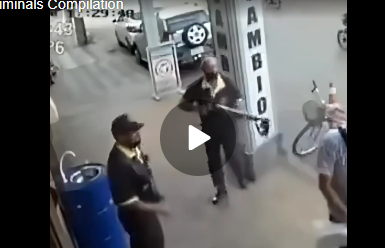The Great Gatsby: A Study Guide
Quiz
Instructions: Answer the following questions in 2-3 sentences each.
- What advice does Nick’s father give him, and how does this affect Nick’s approach to life?
- Describe Gatsby’s personality based on Nick’s initial observations.
- Contrast the atmosphere of West Egg and East Egg.
- What is the significance of the green light at the end of Daisy’s dock?
- What is the nature of Tom Buchanan’s relationship with Myrtle Wilson, and how does it reflect his character?
- What are the rumors surrounding Gatsby’s past, and how do they contribute to the mystery surrounding him?
- Explain the significance of the Valley of Ashes and the billboard with the eyes of Doctor T.J. Eckleburg.
- What is the true story of Gatsby’s origins and how he acquired his wealth?
- What is the climax of the story and what are its immediate consequences?
- Describe the symbolism of the green light at the end of the novel and how it connects to the American Dream.
Answer Key
- Nick’s father advises him to not criticize others because they may not have had the same advantages in life. This makes Nick inclined to reserve judgment and tolerant of others.
- Nick observes Gatsby to be a charismatic and hopeful man with a “heightened sensitivity to the promises of life”. Gatsby’s extravagant gestures and demeanor suggest an underlying longing and a desire for something more.
- West Egg represents “new money” and is characterized by lavish parties and a sense of social climbing. East Egg represents “old money” and is marked by a more established and somewhat jaded social scene.
- The green light symbolizes Gatsby’s unattainable dream of reuniting with Daisy. It represents longing, hope, and the allure of the past.
- Tom’s relationship with Myrtle is a blatant affair fueled by his desire for excitement and control. It highlights his hypocrisy, lack of respect for his marriage vows, and sense of entitlement.
- Gatsby is rumored to be a bootlegger, a murderer, and even related to Kaiser Wilhelm. These rumors add to the intrigue surrounding Gatsby and make it difficult to discern his true nature.
- The Valley of Ashes symbolizes the moral and social decay hidden beneath the glamour of the Roaring Twenties. Doctor T.J. Eckleburg’s eyes represent a judgmental and possibly divine presence overlooking the characters’ actions.
- Gatsby was born James Gatz into poverty in North Dakota. He reinvented himself after meeting Dan Cody, a wealthy yachtsman, and inherited a portion of his fortune after Cody’s death. This backstory reveals Gatsby’s determination and yearning for a better life.
- The climax is Gatsby’s confrontation with Tom at George Wilson’s garage. Gatsby admits to loving Daisy, leading to a heated argument and ultimately Myrtle’s death. This event shatters Gatsby’s dream and sets in motion the tragedy that follows.
- At the end, the green light represents the elusive nature of the American Dream. It symbolizes how the pursuit of material wealth and social status can lead to disillusionment and a yearning for an idealized past.
Essay Questions
- Analyze the role of the past in shaping the characters’ lives and motivations in The Great Gatsby.
- Explore the various symbols employed by F. Scott Fitzgerald in the novel and discuss their significance in relation to the themes of the story.
- Compare and contrast the characters of Tom Buchanan and Jay Gatsby, focusing on their values, desires, and approaches to life.
- Discuss the role of social class and wealth in The Great Gatsby and how they influence the characters’ relationships and destinies.
- Analyze the portrayal of the American Dream in The Great Gatsby. Is it presented as attainable or illusory? Support your argument with evidence from the novel.
Glossary of Key Terms
West Egg: A fictional location on Long Island representing “new money” and social climbers. East Egg: A fictional location on Long Island representing “old money” and the established upper class. The Valley of Ashes: A desolate area between West Egg and New York City symbolizing moral and social decay. The Green Light: A symbolic object representing Gatsby’s yearning for Daisy and the elusive nature of the American Dream. Doctor T.J. Eckleburg: A figure on a billboard overlooking the Valley of Ashes, symbolizing a judgmental, possibly divine presence. Bootlegging: The illegal production and sale of alcohol during the Prohibition era. The Roaring Twenties: A period of economic prosperity and social change in America characterized by jazz music, flapper culture, and a sense of disillusionment following World War I. The American Dream: The idea that anyone can achieve success and upward mobility through hard work and determination. Gatsby’s Parties: Lavish gatherings hosted by Gatsby, often attended by people he doesn’t know, reflecting his longing for connection and his desire to impress Daisy. Nick Carraway: The narrator of the story, providing an outsider’s perspective on the events and characters.
This study guide should help you strengthen your understanding of The Great Gatsby and prepare for any exams or discussions on the novel.
- Dr. Zelenko is the man who advised Trump on Hydroxy ..Here’s his recipe to keep immunity strong – Zelenko Z Stack
- New Junkie Paradise – Whatfinger News – More news daily than any other news site on Earth – CLICK HERE
- IVERMECTIN – – – – -Be prepared for anything, including lockdowns with your own Emergency Med kit – see Wellness Emergency Kit (includes Ivermectin and other essential drugs, guide book, much more… peace of mind for you and your family) 🛑 – Dr. McCullough’s company! – Sponsor
































[…] The Great Gatsby: A Discussion and Study Guide – Audio […]